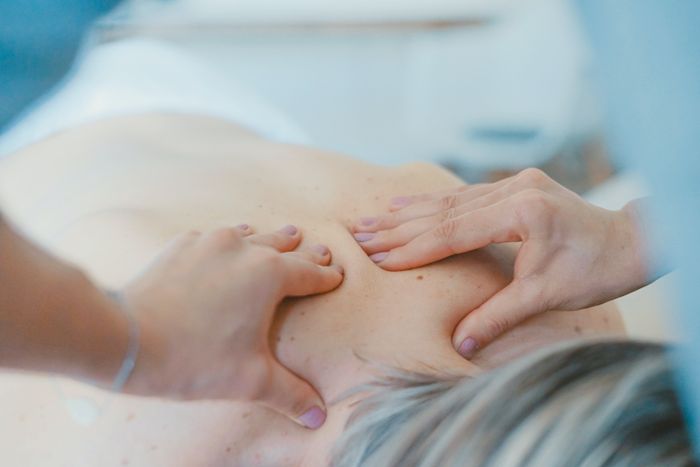This post dives into the most affordable and easiest way to treat pain and injury.

Hot & Cold Therapy

Hot & Cold Therapy
Muscle pains, strains, injuries, and arthritis are all physical dysfunctions that are a part of the glorious experience of living in a human body. Your mileage may vary, of course. We all endure physical discomfort at some point as a result of our muskuloskeletal layers, so what’s the most affordable and easiest means of treating this pain? Answer: hot and cold therapy!
Hot Therapy
Hot therapy involves applying moist or dry heat to an injured or painful area. This could be dry heating packs, bags, or pads. Moist heat can be a hot bath, a dip in a hot tub, or steamed towels, showers, and saunas. Hot therapy aids the painful area in opening the capillaries for more productive circulation and healing. It is also super soothing and helps the body to relax.
At Height of Health Massage here in Fort Collins, we use hot stones with every massage session. Our aim in using hot stones is to add an additional relaxing component to the session while also helping to soothe muscles before or after they’ve been massaged. It is important to apply whichever application you choose at a “warm” temperature as opposed to a “hot” temperature as it is easy for your thermoreceptors (nerve cells that detect temperature) and nociceptors (nerve cells that detect pain) to numb out with extreme heat.
Heat works best for body pain that comes as a result of trigger points, overexertion from exercise or hard labor, menstrual cramps, and more. It is best to not use heat after a fresh injury like an ankle sprain or a flare up of a previous injury such as tendinitis or plantar fasciitis in order to avoid an increase in inflammation. Heat works best when applying in 10-15 minute intervals.
Check out the tutorial video below to learn how to make a cheap and easy heat pack at home!

Cold Therapy
Cold therapy involves an ice or gel pack, a bag of frozen peas, or full and partial ice baths. Cold therapy works by reducing blood flow to an injured area and numbing pain. When we sprain our ankle or strain a muscle, our body does its magic by sending all the troops to contain the trauma (aka: the inflammatory process). Swelling and redness occur as a result of blood vessels dilating, making way for a steady flow of white blood cells to the injured area. Sometimes the inflammation process goes above and beyond the call of duty leading to pain and swelling lasting longer than it should. This is where cold therapy comes in to save the day! The cold slows down these natural processes and calms the pain and swelling. When this type of injury happens it’s best to apply ice for about 10 minutes at a time with 20 minute breaks in between.
Ice can also be used to ease pain in chronic issues that came as a result of overuse such as various types of tendinitis, carpal tunnel syndrome, shin splints, and plantar fasciitis. Some sources suggest steering away from ice for general muscle pain, but others encourage using what seems to work best for you.
Similar to the DIY heat pack, grab an old sock and some ice from the freezer for an easy cold pack!
Summary
- Hot and cold therapies are an affordable way to treat pain and injury. You can use supplies found in your home to create an easy, cost effective heat or ice pack.
- Remember that heat increases blood flow, cold decreases blood flow. Be careful not to use heat in the event of an immediate or reccuring injury.
- Just like most things in life, it is best to use hot and cold therapy in moderation. Avoid using hot or cold therapy for longer than 10-15 minutes at a time.
